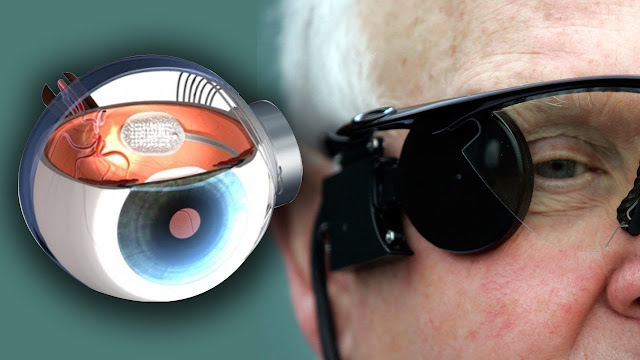The Incredible Impact of Artificial Retina
 |
| Artificial Retina |
One
in 3,000 people are blind due to one of these hereditary diseases, called
retinitis pigmentosa, and could potentially benefit from artificial retinas. Majority
of the Inhabitants who are blind are relying
on a guide dog or walking sticks to go around. However, after an Artificial retina implanted into the eyes, can
now help them to be able to feel the pavement and curbs when outside.
Researches aims to create a sophisticated Artificial Retina an electronic implant that will restore eyesight to those who have lost it due to an irreversible retinal condition. The goal is to develop a special device that can closely resemble typical retinal function through the creative integration of basic and applied research. The goal is to create high-fidelity artificial vision by accurately reproducing the retinal code at the cellular level with cell-type specificity.
Light
reflected from an object enters the eye of a person who can see, and retinal
photoreceptor cells in the retina detect this light. Photoreceptors encode
visual information, which the retina decodes and transmits to the brain as
spikes in retinal output neurons. The information from retinal spike trains is
subsequently assembled by visual centers in the brain, including the visual
cortex, to create a conscious sense of the image and a variety of visual
behaviors.
The
implant is powered by a wireless computer and a video camera in glasses. Camera
images are processed by the computer and converted into electronic signals that
are sent to the implant as visual information. The mechanism
activates the retina's still-healthy cells, which prompts them to transmit information
to the optic nerve. The visual information is subsequently transmitted to the
brain, where it is converted into light patterns that can resemble the outline
of an object. Patients must be taught how to decipher the light bursts; for
example, they might interpret three bright dots as the triangle's three points.
In
fact, the Artificial Retina
implant is only meant for people with specific types of inherited retina
problems who still possess some functional cells. The optic nerve must be
functioning and they must have previously been able to see. Only a few people
have received the artificial retina since 2002, and some patients have seen
well enough to identify objects, shapes, or even read large print. Despite
being years away from having a marketable product, researchers are working on
another artificial retina implant that transmits images to the eye via pulses
of infrared light. It's quite amazing how far we've come from having no
treatment options for blindness to being able to partially restore sight.



Comments
Post a Comment